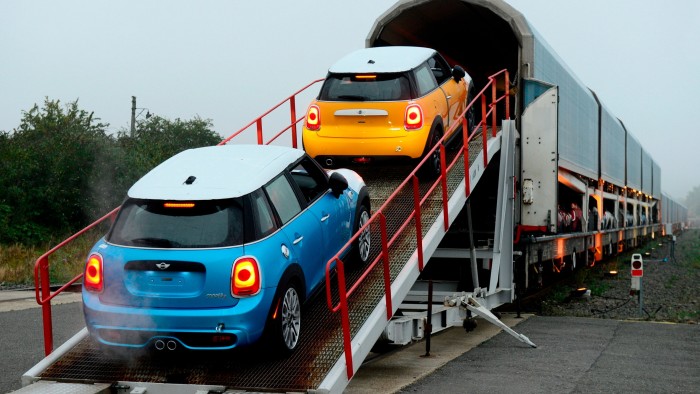Unlock the Editor’s Digest for free
Roula Khalaf, Editor of the FT, selects her favourite stories in this weekly newsletter.
An obscure Oxford rail freight line closed to passengers for more than 60 years has emerged as an unlikely battleground in the UK’s quest to boost sluggish economic growth.
Leading scientific organisations, including a major new institute funded by Oracle co-founder Larry Ellison, have launched a campaign to revive the three-mile Cowley branch line to link up Oxford’s growing research centres.
The line, which for decades has only transported newly built Minis from a BMW plant, is a tale of both Britain’s industrial past and the infrastructure shortfalls hampering its future.
Professor Sir John Bell, president of the Ellison Institute of Technology Oxford, said reopening the line to passengers could be crucial for access to “tens of thousands of jobs”, including more than 5,000 scientists that the EIT intends to employ.
While the institute and its partners have committed almost £25mn in funding for the project, they are lobbying for the bulk of the funds to come from the upcoming government spending review.
Bell said the EIT was “the biggest inward investment in science and technology that the country has ever seen, so not having it linked up to a transportation network is a bit dumb”.
He added that the Cowley branch line would make the proposed Oxford to Cambridge “Arc” train route more useful, by connecting it with the Oxford Science Park and Oxford Business Park. The branch line would link with mainline rail services to London, where many of the artificial intelligence scientists who are working at the EIT are based.
The institute has co-founded the campaign to revive the line, along with ARC Oxford, a science and technology cluster owned by US-headquartered Brookfield Asset Management, and Oxford Limited, Oxford university’s brand management arm. The fourth founder is Oxford Science Park, which is majority owned by the university’s Magdalen College, and hosts the EIT development.
Lord Patrick Vallance, science minister, last week visited ARC Oxford and the site of one of two new rail stations proposed under the branch line plan. Empowering such places to fulfil their potential would be key to “unleashing the Oxford-Cambridge corridor as a driver of economic growth”, Vallance said, although he stopped short of explicitly endorsing the Cowley line campaign.
Campaigners want to reopen the existing line from the BMW factory in Cowley, east Oxford, to passengers. The track swings past the science and technology hubs on its way to linking up with the main rail line to the city.
One proposed new station would be next to Oxford Science Park, while the other would serve ARC Oxford and the Blackbird Leys residential area near the BMW factory. The plan calls for a new direct twice-hourly service to London’s Marylebone station.
The campaign founders estimate the capital cost of the upgrade at £155mn and claim that expert analysis forecasts a return of £3.66 for every £1 invested. The group and local government partners have already contributed £4.5mn and pledged another £20mn.
The Cowley branch line closed to passengers in 1963, as the UK shrank its rail network by closing routes and stations deemed uneconomic. It continued to carry freight from the car plant and now transports about 550 Minis a day.
BMW said it welcomed “the further strengthening and expansion of local infrastructure and public transport in Oxford”. It was not actively supporting the branch line project, it added.
The EIT aims to focus on big global problems such as healthcare, food security and climate change. Bell wants scientists of different disciplines to mix on a vast, open campus.
“Everybody from nuclear physicists through to population biologists will be milling around and hopefully exchanging good thoughts. And if you’re going to have that kind of a house with a critical mass of people on one site, then you’ve got to have transport to get people here because if they all drove a car, you’d be completely stuck,” he said.
Additional reporting by Philip Georgiadis
Read the full article here

